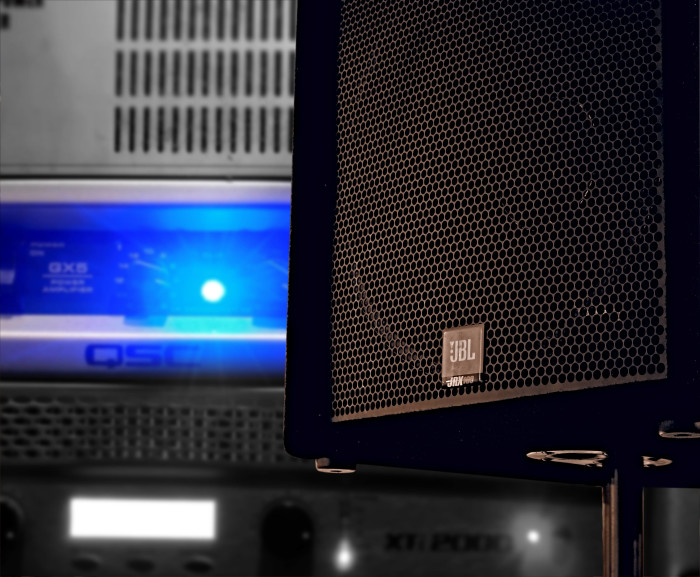A calculator for figuring out how much SPL a reasonably-powered rig can develop.
Please Remember:
The opinions expressed are mine only. These opinions do not necessarily reflect anybody else’s opinions. I do not own, operate, manage, or represent any band, venue, or company that I talk about, unless explicitly noted.

 Want to use this image for something else? Great! Click it for the link to a high-res or resolution-independent version.
Want to use this image for something else? Great! Click it for the link to a high-res or resolution-independent version.As a follow-on to my article about buying amplifiers, I thought it would be helpful to supply an extra tool. The purpose of this calculator is to give you an idea of the SPL delivered by a “sanely” powered audio rig.
A common mistake made when estimating output is to assume that the continuous power the amp is rated for will be easily applied to a loudspeaker. This leads to inflated estimations of PA performance, because, in reality, actually applying the rated continuous power of the amp is relatively difficult. It’s possible with a signal of narrow bandwidth and narrow dynamic range – like feedback, or sine-wave synth sounds, but most music doesn’t behave that way. Most of the time, the signal peaks are far above the continuous level…
…and, to be brutally honest, continuous output is what really counts.
This Calculator Requires Javascript
This calculator is an “aid” only. You should not rely upon it solely, especially if you are using it to help make decisions that have legal implications or involve large amounts of money. (I’ve checked it for glaring errors, but other bugs may remain.) The calculator assumes that you have the knowledge necessary to connect loudspeakers to amplifiers in such a way that the recommended power is applied.
Enter the sensitivity (SPL @ 1 watt @ 1 meter) of the loudspeakers you wish to use:
Enter the peak power rating of your speakers, if you want slightly higher performance at the expense of some safety. If you prefer greater safety, enter half the peak rating:
Enter the number of loudspeakers you intend to use:
Enter the distance from the loudspeakers to where you will be listening. Indicate whether the measurement is in feet or meters. (Measurements working out to be less than 1 meter will be clamped to 1 meter.)
Click the button to process the above information:
Recommended amplifier continuous power rating at loudspeaker impedance:
0 Watts
Calculated actual continuous power easily deliverable to each loudspeaker:
0 Watts
Calculated maximum continuous output for one loudspeaker at 1 meter:
0 dB SPL
Calculated maximum continuous output for one loudspeaker at the given listening position:
0 dB SPL
Calculated maximum continous output for entire system at the given listening position:
0 dB SPL
How The Calculator Works
First, if you want to examine the calculator’s code, you can get it here: Maxoutput.js
This calculator is intentionally designed to give a “lowball” estimate of your total output.
First, the calculator divides your given amplifier rating in half, operating on the assumption that an amp rated with sine-wave input will have a continuous power of roughly half its peak capability. An amp driven into distortion or limiting will have a higher continuous output capability, although the peak output will remain fixed.
The calculator then assumes that it will only be easy for you to drive the amp to a continuous output of -12 dB referenced to the peak output. Driving the amp into distortion or limiting, or driving the amp with heavily compressed material can cause the achievable continuous output to rise.
The calculator takes the above two assumptions and figures the continuous acoustic output of one loudspeaker with a continuous input of -12 dB referenced to the peak wattage available.
The next step is to figure the apparent level drop due to distance. The calculator uses the “worst case scenario” of inverse square, or 6 dB of SPL lost for every doubling of distance. This essentially presumes that the system is being run in an anechoic environment, where sound pressure waves traveling away from the listener are lost forever. This is rarely true, especially indoors, but it’s better to return a more conservative answer than an “overhyped” number.
The final bit is to sum the SPLs of all the loudspeakers specified to be in the system. This is tricky, because the exact deployment of the rig has a large effect – and the calculator can’t know what you’re going to do. The assumption is that all the loudspeakers are audible to the listener, but that half of them appear to be half as loud.